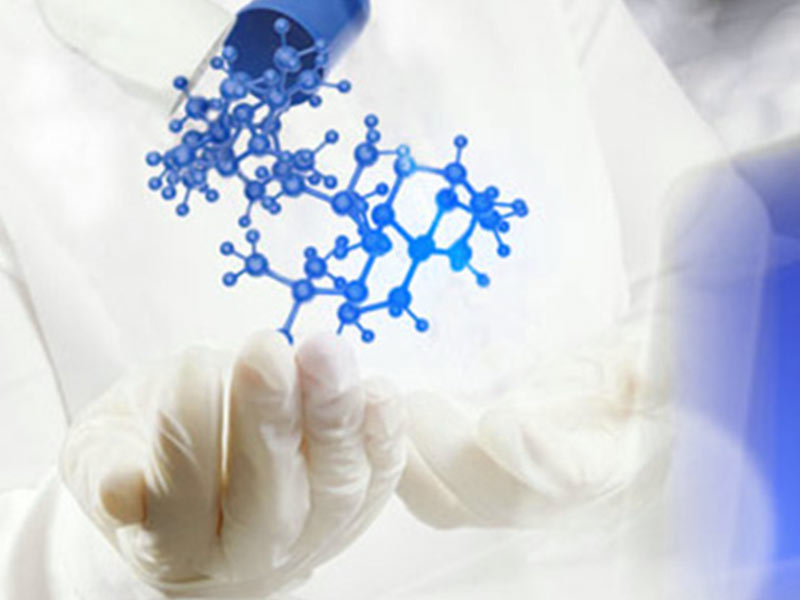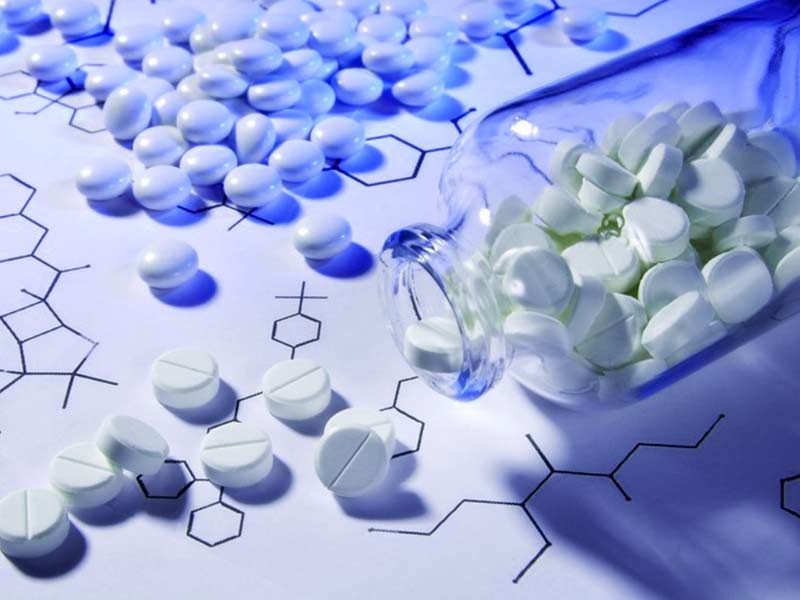In view of the imperative application of QbD in China’s drug R&D, Dr. Wang Xingwang told R&D supervisors with a number of specific R&D examples: some QbD elements can be appropriately added at different stages of R&D, such as R&D objectives (QTPP), CQA, CMA, CPP and control strategies; QbD tools, such as risk assessment and prior knowledge, can be appropriately applied at different stages of R&D.
The essence of QbD The concept of QbD came from ESQM, QbD and Q9 risk management, Q10 quality system, Q11 just released API research and development, QE preparation research and development. In this way, four or five guiding principles can be combined and called the QbD series of guiding principles. The so-called QbD has several nouns for its basic content, the first is to pre-set a product quality profile called the target product quality, to determine the key quality attributes of a product, referred to as CQA, these two can be evaluated after doing a good job, one is called CMA, the second is CQA. QbD related to drug development is mainly related to the process verification of the first process design, the first stage is the process design concept. This includes three aspects, one around product development management, the second around process development understanding, and finally the establishment of control strategies in our process design.

The QbD approach places more emphasis on product understanding, based on analytical evaluation, to associate CMA with CQA, and more emphasis on process understanding, based on risk assessment, to associate CMA and CPP with the CQA of the product. The control strategy it establishes should be said to be comprehensive and integrated. The important tools of QbD are first and foremost risk assessment, secondly process analysis technology, and third DOE, which we basically do not do in China. The fourth model simulates, below prior knowledge and knowledge management, and quality systems. QbD is therefore a scientific risk-based, holistic and proactive charge model. QbD’s method is widely used internationally in the verification of production processes, starting from January 1 last year to apply for generic drugs in the United States, the FGA in the United States, has mandatory process design part must submit QbD declaration materials. To say that the essence of QbD can be understood from three aspects, one aspect can be considered that this modern drug development method can be said to be QbD method, life cycle method and traditional method is different, the most important difference is to emphasize the organic combination of scientific knowledge and risk assessment.
The second aspect can be regarded as a philosophy that follows the dialectical unity of beginning and end, hoping to pursue the goal from beginning to end, consistently. For example, it emphasizes the end as the beginning, strengthens the research and development goals, emphasizes the beginning and the end, highlights the process control, the good beginning and the end, pays attention to continuous improvement, and hopes to ensure the final quality, product quality, and analytical method quality through the initial design, which is a philosophy.
The third aspect can be regarded as an art of product life cycle management that implements product processes and analytical methods, so the QbD method is also called the life cycle method.
Concrete application of the concept Below we focus on sharing the concept of QbD and how to apply it in research and development. It includes three aspects.
Before one R&D begins, the second R&D process, the third R&D ends. Let’s take a look at how the QbD concept can be applied in concrete terms.
First look at the application before the start of the first aspect of research and development, mainly including the two aspects I just talked about, one QTPP, one is CQA, before the start of the research and development work we must be clear. This QTPP concept refers to a forward-looking summary of product quality attributes, but this product quality attribute can be considered as a broad concept. CQA is the physical, chemical, biological nature and characteristics of a species, which must be controlled within a range distribution and become CQA. The process determined by the QTPP can be expressed in the form of a table, including elements, objectives, and rationality descriptions, for example, elements can include indications, drug quality attributes, such as intermediate quality attributes, quality attributes of finished products, pharmacopoeia regulations on a certain dosage form, and so on. Consistency of the way the packaging system is given and the instructions. The last alternative to giving shows a process identified by the QTPP. This is worth noting the consistency of the way of giving and the instructions, you see this wrote two aspects of the content, one is whether there are dietary contraindications, taking pills to consider not considering the impact of food, coffee, drinking should pay attention to. If it is an injection, for example, there is a small water needle that needs to be absorbed, at this time, the consistency of the way of giving and the instructions should be clear, what is the dilution solvent you use, how much amount is used, under what conditions, how long can such a diluted solvent be put clinically, with stability, and the topic of stability.
Alternative dosing methods should also be explained, such as dispersible tablets dispersed into warm water for him to take, and the instructions have other methods of taking, such as chewing and then taking in the mouth, which should also be made clear.

To determine CQA can be determined through such an instruction, mainly from the perspective of the efficacy and safety of the drug to see whether it is CQA of this product, of course, it may be possible that it is not, if it is not certain when further research is needed. If it is CQA, we must further look at whether this CQA is affected by the product or process, if it is affected, it is the object of in-depth research on our risk assessment, if it is not affected, we can not do in-depth research on risk assessment.
Here is a CQA determination process, which can also be reflected through a table, listing the product quality attributes, whether the target is CQA, whether the risk assessment is required to be studied in depth, and give a reasonable explanation. For example, such a pill can include the appearance shape, smell, size and size, and have notch marks. Color and shape are not directly associated with the validity of occurrences and therefore neither of them is CQA.
This indicator is indeed critical for the effectiveness and safety, so we can think of it as a CQA, but this identification item is controlled by the SSQ3 quality system as long as the system is effectively controlled. The second aspect is that we test in the release of drugs, and the quality testing bears the brunt of identification, so although it is a CQA, it is unlikely to be the impact of the prescription and process, so we can not do in-depth research on risk assessment.
For example, the content uniformity, dissolution degree, and content are related to the product, so risk assessment is studied in depth.
For example, moisture, we say that the water content of the product may lead to the growth of microorganisms may be potential CQA, this variety is more special, APIs are not sensitive to moisture, and do not affect the stability of the product, so the quality attributes of moisture in this variety are not CQA nor do you need to conduct risk assessment quality research, determine whether to risk assessment quality research, need specific varieties of specific analysis.
We will start the application of the QbD concept before the start of research and development, and we must learn these two things in China, how to determine the research and development goals, and how to determine the CQA. We look at applications in the R&D process. One around the product one around the process, its development, its understanding, its core will be material properties and process maturity and product quality attributes associated, the main tool used is risk assessment, because the risk and material properties and process products are intrinsically linked, we see the development process QbD concept application, will be related to the product-related variables and process-related variables, through the risk assessment and the product’s CQA associated, to determine the criticality, is to determine two things one called CMA and one called CQA determination. Criticality is the point with the highest risk of chain breakage, the highest risk of rope disconnection, the highest risk of water leakage, and now it is mandatory to write the first thing is the key step, and the process parameters in the key steps are explained by rationality, without really in-depth determination of CMA and CPP. CMA will have a significant impact on the product’s material properties, CPP refers to process properties that have a significant impact.

CQA talks about the key characteristics of the output material, and CMA talks about the key of the input material. This will change with each other, everything is the same thing, we have to learn how to look for potential CMA, CPP, or look for high-risk material properties and parameters, and how to relate to CQA is the way. If we determine the mixture as the CQA of the intermediate, the CQA of such a complex becomes an important CMA in the following tablet pressing process into the material properties, which is the input and the output. For example, we have determined that the mixing properties are the CQA inside the mixture, how to find the CMA, you think about the mixture of the intermediate as CQA, see which one has a significant impact on the processability of the mixture, there are many in the mixture, the uniformity of the particles and the uniformity of the mixture have a significant impact, can be seen as a potential CMA, or a high-risk material property, and finally determine the need to do risk assessment, need to do in-depth research.
Looking for potential CPPs is exactly the same as the example just now. The study of this prescription must use risk assessment, risk identification, risk analysis, risk assessment. The most important tool used in risk assessment is called FMEA. What went wrong, what went wrong, we called FM at FMEA. Material properties, process parameters, what is the impact of these things on product quality properties, this is called impact analysis, this is called EA, which constitutes FMEA. Because this method can be a good way to associate the material attribute process parameters with the quality attributes of the product to establish a functional relationship, the FMEA method is very commonly used in pharmacy and very effective. Such a risk assessment tool, its evaluation process includes eight steps, a determination of the assessment object, just now the powder foam tablet is the evaluation object, and then the evaluation object is analyzed, and then the failure mode and impact analysis, on this basis we can carry out SPD analysis, S is the severity, P is the probability, how likely is the risk to occur, how frequent is the risk, D is detectable, this can not be found in advance, It is possible to establish certain criteria to score the SPD, which is called risk analysis. Multiply the SPD to get a comprehensive score, the risk priority number, called RPN in English, and then sort to determine the size of the risk, combined in one is the risk evaluation, the risk is done, after the risk assessment is done, we see if we want to improve the measures, and then we reduce the risk, this is the risk control, we are ultimately to control the risk. The last step of improvement after the improvement assessment is updated, re-scored, SPD, RPN re-scored.
This immediate-release tablet we carry out SPD standards, from the S degree of re-deviation, but not obviously affect the quality of the product we can be rated as 1 point, this lowest severity, there is also a risk but can check that we rated as 2 points, causing a small number of product departments to pass the rating of 3 points, resulting in the suspension of this is 4 points, the most serious this product on the market needs to be recruited, this rating is 5 points, this is the severity S score.

The second aspect of the probability P we score, one in ten thousand probability we think it is unlikely, the production of ten thousand batches of up to one batch of unqualified, if the production of a hundred batches of about a hundred years to appear once, this is the smallest possibility of occurrence, this can be rated as 1 point. One of the thousands of the possibilities, about once in ten years, rated as 2 points, one percent of the probability of occurrence once a year, one in ten is called likely to occur, about once a month, the highest probability of this occurrence is 5 points, is within one-tenth of the probability, this is called frequent occurrence, about a month may occur an error, this rating is 5 points, this is based on past experience, past data on the possibility of risk occurrence scored.
The third aspect of detectability D score, for example, before the issuance can be found, this detectability maximum score of 1 point, in the process of occurrence of rated as 2 points, after the listing by the customer found that this detectability is worse can be rated as 5 points, this we get the SCORE OF SPD, the three can be multiplied can get RPA, greater than or equal to 40 points, unacceptable, need further research to reduce risk. 20 to 39, acceptable, may xu for further study. Less than 20 points is acceptable risk and no research is needed.
This way we can reflect your risk assessment in-depth research process in a tabular form, RPA, SPD and other indicators.
We talk about the initial evaluation, the powder foam preparation is very simple, such as mixing, this API density distribution mainly affects the dissolution degree, this is too large to lead to a decrease in dissolution, at this time it is indeed possible to cause a small number of batches of products to fail, so the severity S We can rate it as 3 points. Such an impact may occur once in less than a month, the highest probability of occurrence, so we can give P5 points, need to be a product test can be found, so this detection is not good this D we count as 4 points, so RPA gets 60 points, according to the standard just now it is a high-risk factor. For example, the tableting mainly affects the dissolution degree, this severity is relatively high, it is possible to stop production because of product defects, so this S can be counted as 4 points, it may happen once in less than a month, this probability P can be counted up to 5 points, but the impact of tableting on dissolution can be found in the tablet pressing process, the detectability is relatively good, D can get 2 points, this multiplication score is 40 points, although this score is relatively low, according to our standards This is still a high-risk factor, Because of the time relationship, I will not talk about it, but through the initial risk assessment, we found five high-risk process attribute material parameters, and took improvement measures for these five high risks.
For medium risk, two low-risk blends of horizontal tablets we give a range of this initial risk assessment is over. We then carry out activities in terms of process development and understanding. For example, the density distribution of APIs, we studied 4 to 45 degrees of condensation, after in vitro dissolution degree study, and finally found that 10 to 30 degrees is more appropriate, more than 30 degrees is not suitable. After such a process development understanding, and then the risk assessment update. After the risk assessment update, it was found that the probability and detectability of the influence of API density on dissolution did not change, S was 3 points, P was 5 points, D was 4 points, and RPA was 60 points, which was still at high risk. This is because when we develop the understanding, the mixing time of the mixing process is fixed, and there is a number of revolutions per minute on the mix, which is fixed, so it is not a high risk of control, so further improvement measures are needed.

Another example is the impact of tablet compression on dissolution, S or 4 points, the possibility of occurrence from less than a month of 5 points, to 4 points, only a small amount of improvement, mixing slightly reduced, RPA became 32 points, from high risk to low risk, although the possibility of occurrence is still very large, from less than once a month to occur once a month, 5 points into 4 points This is still very risky, which also requires further improvement measures to control risk, although the risk level is medium risk, Medium risk may or may not require research, which is subject to availability. In this way, two online control strategies were implemented, and the method called NIR was adopted in the mixing process, and when a certain efficiency was achieved by controlling the continuous spectrum, I stopped, from 5 points to 3 points, which occurred about once a year, and the more important detectability was greatly improved, 4 points, which can be pre-controlled, D became 1 point, so that RPA60 was reduced by 9 points, and the high risk was reduced to low risk.
Control the tableting force, the possibility of occurrence from 4 points to 2 points, about ten years when it occurs once, this possibility is also very small, so the RPA from 32 points to 16 points, the medium risk becomes low risk, all risks become low risk to an acceptable degree, the concept of QbD is to organically combine risk assessment and scientific knowledge, that is, with the dissolution degree of mixing uniformity, content uniformity and other products of the CQA associated thinking, looking for a process of determining CMA, CPP. Finally find the API density distribution is the CMA of the variety, the tablet compression force is the CPP of this variety, and then we can control the strategy, and implement the control strategy when commercial production. It is easier to use such a diagram to show the use of the QbD concept.
Establishment of a control strategy at the end of R&D At the end of the research and development, the QbD concept is applied to establish a control strategy, and the control strategy is a set of planned control means, mainly including material properties, the second process parameter and the third quality standard, including other aspects.
For example, there is a control of the material of the immediate release tablet, from the API to control the crystal form, in order to ensure the consistency of in vitro and in vivo, to ensure sufficient fluidity, as well as the consistency between the newspaper batches, for dissolving agents and talc powder should also be controlled, in order to indirectly delay dissolution, with multiple dissolution will decline.
For the process strategy should also be controlled, this variety controls the tableting speed, tablet pressing force, and this is used as a CPP control to ensure compliance with the requirements. For the process control is done very finely, hardness, content, total film weight and so on.
Product quality standards, of course, need to be controlled. I shared the QbD concept before the start of research and development, in the process of research and development, how to apply specifically at the end of research and development, the following is a summary.
When the above three stages are combined, it can be considered that the implementation steps based on the QbD process design, which illustrates the case of solid formulations, such a process design is also used for other preparations, APIs industry, and even method design, and such an implementation step is basically the same. Roughly including three steps, a determination of R & D objectives, such as for the process design QTPP, for the analysis of method verification, method design has an analysis of the target overview, APP, this foreign has been very mature, the second to determine the product CQA, for the analysis method is to determine the key performance characteristics of the method. The third part is to find out all the known material property parameters that may affect the product or process performance, and for the analysis method, it is to find the properties of the material, and we reagent the material properties. Let’s look for the method parameters. The fourth step is to use scientific knowledge risk assessment to determine high-risk attributes or parameters. The next step is to give it a horizontal range, that is, the scope of research, to choose it according to our work experience, and then we can carry out program design and in-depth research, and after the end, we can analyze the data, and through the analysis of these data, we can determine the key things.

If the design changes of the properties and parameters obviously affect the output, this property must be critical, and this parameter is also critical, and then update the risk assessment, one update is not enough, there are two or three updates.
The last step is to establish a suitable control strategy, CMA, CPP to define the scope of study, so that our control strategy can finally be controlled.
On the last note, I would like to make a summary of today’s sharing. There are four aspects.
One speaks QbD is the most advanced control mode in the world, and its essence is concentrated in the ICHQ8-QDD guidelines.
Second, some QbD elements can be appropriately added at different stages of research and development, and the research and development goals QTPP, CQA, CMA, CPP and control strategy can be appropriately added.
The third aspect is the appropriate use of some QbD tools, risk assessment and prior knowledge at different stages of research and development.
The practical application of the fourth QbD in China’s drug research and development is imperative. For example, in September last year, the National Evaluation Center had two special performances, Teacher Wang Yawei took the lead in instilling the concept of QbD, and second, he invited some front-line R&D personnel, domestic doctors, to introduce the method of how to use QbD at the meeting. Therefore, the intention of the national Office to demonstrate and guide such a direction is already very clear. Only by making preparations early, making sufficient preparations, we must continue to accumulate, accumulate thick and thin, and realize the Chinese dream of truly integrating with international standards! Divided into three stages, we have to learn to apply QbD noun chart expression. Second, we slowly learn to apply the concept of QbD, and secondly, we also have methods. The third is to really apply the method of QbD, and finally use it in combination with the traditional method, because there is a reason that QbD does not exclude the traditional method, it can be combined together.










